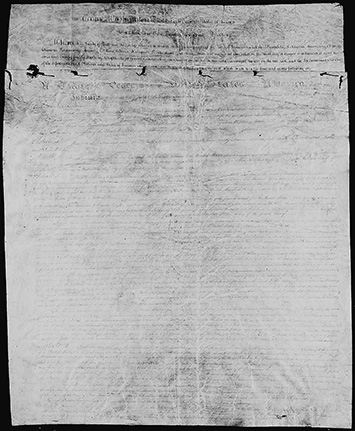Within any tribal community, the decision to fight was solely at the discretion of the individual warrior. No war chief had the ability to make any warrior fight for him or his chosen cause. This was true for the many, different tribes that fought in the War of 1812. From Odawa to Seneca to Ho-Chunk to Wyandot, the path to war was as unique as the tribes themselves. Nations are built upon individuals, with individuality an important characteristic of both a tribe and a nation.
As the United States grew and expanded in North America, it simply could not push people out of its path. These people fought for their homes.

National Archives and Records Administration
Not every man was a warrior who would set out on the war path; it was his characteristics that would determine what his role would be. But for those who did take on that responsibility, the war path afforded young men the opportunity to prove their courage and valor. Beyond just their own needs, a warrior weighed the needs of the larger community. These included the needs of tribes to protect their economic interests and as natural resources, a warrior’s desire to seek retribution against fallen brothers, or a desire to make one, final stand against constant relocation. The threat of extinction of a tribe was very real in 1812. Losing political autonomy and identity could result in the very physical eradication of a nation. The eastern tribes had been devastated by European contact through war and disease. One universal reason tribes fought was to protect their lands and ways of life, but motivations varied widely from tribe to tribe.
Tribes realized without a land base there was no nation. War for land was being visited upon village after village, tribe after tribe. Tribes had engaged in many treaties prior to 1812 in order to secure lands and live peacefully with their new American neighbors. The 1795 Treaty of Greenville was supposed to establish “Indian lands” and end the frontier wars. But white settlers continued to go into lands reserved for tribes. Subsequent treaties were later enacted, such as the Fort Harmer treaty of 1808, but many times these treaties were seen as illegal and illegitimate agreements. Tribes argued that during the Harmer treaty, only a few men without authority signed away millions of acres of lands. Tribes repeatedly engaged in multiple treaties with the United States to avoid war, but when the treaties were not honored and lands taken, war became inevitable.
Tribal nations from across the United States believe they were created in North America. The traditions vary from tribe to tribe but the belief is the same: we were created in our homelands; we did not come here from another continent. When indigenous populations believe themselves to have roots in a land that go back since time immemorial, those tribes are not easily relocated. As the United States grew and expanded in North America, it simply could not push people out of its path. These people fought for their homes.
Last updated: August 14, 2017
